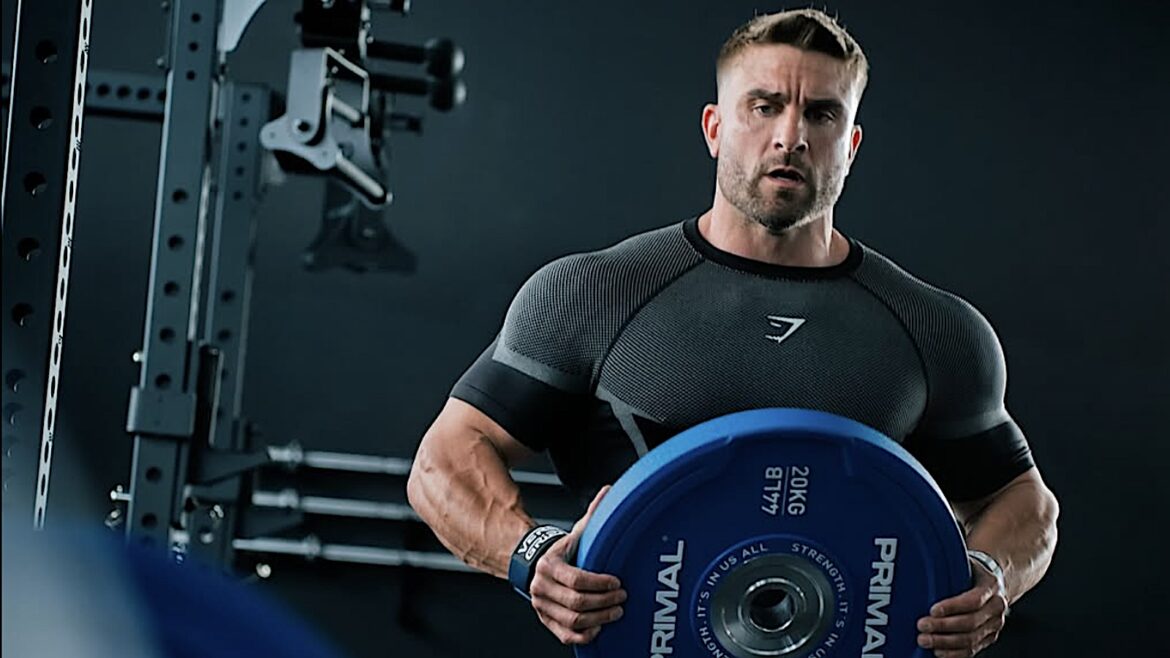Ryan Terry avoids weighted core work to maintain a lean, narrow waistline.
The life of a world champion bodybuilder is a demanding balancing act of global travel, guest appearances, intense competitions, and managing mental health and family. For the two-time Olympia Men’s Physique champion and three-time Arnold Classic winner Ryan Terry, these challenges are compounded by the toll of injuries.
Terry stays at the top of his game, navigating these obstacles with his carefully crafted morning routine.
“If you want something bad enough, you have to do the things you don’t necessarily want to, [no] excuses,” Terry explained. “Come October, I want to be at my best. I don’t want to look back [with] any regrets. I’d rather be in bed, but I’m not losing that title for not being accountable.”
Ryan Terry’s Morning Routine
Over the years, Terry has battled a series of significant injuries, including a torn hip labrum, bulging spinal discs, a shoulder slap tear, a ruptured ACL, and the complete erosion of cartilage in both knees. Earlier this year, he underwent stem cell treatment for his hips, knees, shoulders, and spine. As a result, Terry’s mornings focus heavily on recovery, mobility, and core strengthening.
Pre-Workout
When the two-time Olympia Men’s Physique champion first wakes up to coffee, which can boost exercise and physical performance, benefiting individuals regardless of their training level. (1)
Only small coffee, though. Quite strong, though.
—Ryan Terry
Shoulder Mobility Routines
After his morning coffee, Terry trains shoulder mobility and stretches. Five weeks into his stem cell treatment recovery, his morning routine remains crucial to the healing process.
I can not believe how much my mobility has improved.
—Ryan Terry
A study published in the International Journal of Sports Physical Therapy highlights the effectiveness of stretching in rehabilitation. It enhances range of motion and improves overall mobility. (2)
Terry performs three sets of 10 reps using a stick to train shoulder abduction and adduction. He finds a stick more effective than a resistance band, ensuring better form.
When you’ve got a band, you can move your elbows. [Using a stick] locks you in straight position.
—Ryan Terry
Lower Body Stretches
Terry performs kneeling lunge stretches for his hips, quads, and hamstrings. The latter of which has been a constant challenge for him.
Terry is renowned for his well-defined midsection symmetry, proportional aesthetics, and conditioning. To maintain his lean, narrow waistline, Terry avoids heavily weighted exercises that could thicken his abs and compromise his silhouette.
Instead, Terry prioritizes bodyweight movements like side planks, hip thrusts, bicycle kicks, crunches, and leg raises. He performs three sets each for a minimum of 10 reps per set.
Sauna & Cold/Hot Therapy
While there’s no definitive research on the best time for an ice bath, Terry prefers it in the morning to reduce inflammation. However, if ice baths aren’t an option, studies suggest active recovery delivers similar results for managing inflammation post-training. (3)
It’s away from my muscle building, hypertrophy session. It wakes me up for the day.
—Ryan Terry
Terry alternates between cold and hot therapy for one minute before heading straight into his sauna for 20 to 30 minutes. While Terry acknowledges claims about the sauna’s benefits for recovery and healing (4), he relies on his body’s feelings rather than strictly following guidelines.
No matter where, I hit the same fundamentals — recovery, rehab in the gym, core…I want…[my] best come October.
—Ryan Terry
References
- Guest, N. S., VanDusseldorp, T. A., Nelson, M. T., Grgic, J., Schoenfeld, B. J., Jenkins, N. D. M., Arent, S. M., Antonio, J., Stout, J. R., Trexler, E. T., Smith-Ryan, A. E., Goldstein, E. R., Kalman, D. S., & Campbell, B. I. (2021). International society of sports nutrition position stand: caffeine and exercise performance. Journal of the International Society of Sports Nutrition, 18(1), 1. https://doi.org/10.1186/s12970-020-00383-4
- Page P. (2012). Current concepts in muscle stretching for exercise and rehabilitation. International journal of sports physical therapy, 7(1), 109–119.
- Peake, J. M., Roberts, L. A., Figueiredo, V. C., Egner, I., Krog, S., Aas, S. N., Suzuki, K., Markworth, J. F., Coombes, J. S., Cameron-Smith, D., & Raastad, T. (2017). The effects of cold water immersion and active recovery on inflammation and cell stress responses in human skeletal muscle after resistance exercise. The Journal of physiology, 595(3), 695–711. https://doi.org/10.1113/JP272881
- Ahokas, E. K., Ihalainen, J. K., Hanstock, H. G., Savolainen, E., & Kyröläinen, H. (2023). A post-exercise infrared sauna session improves recovery of neuromuscular performance and muscle soreness after resistance exercise training. Biology of sport, 40(3), 681–689. https://doi.org/10.5114/biolsport.2023.119289
Featured image: @ryanterry on Instagram
